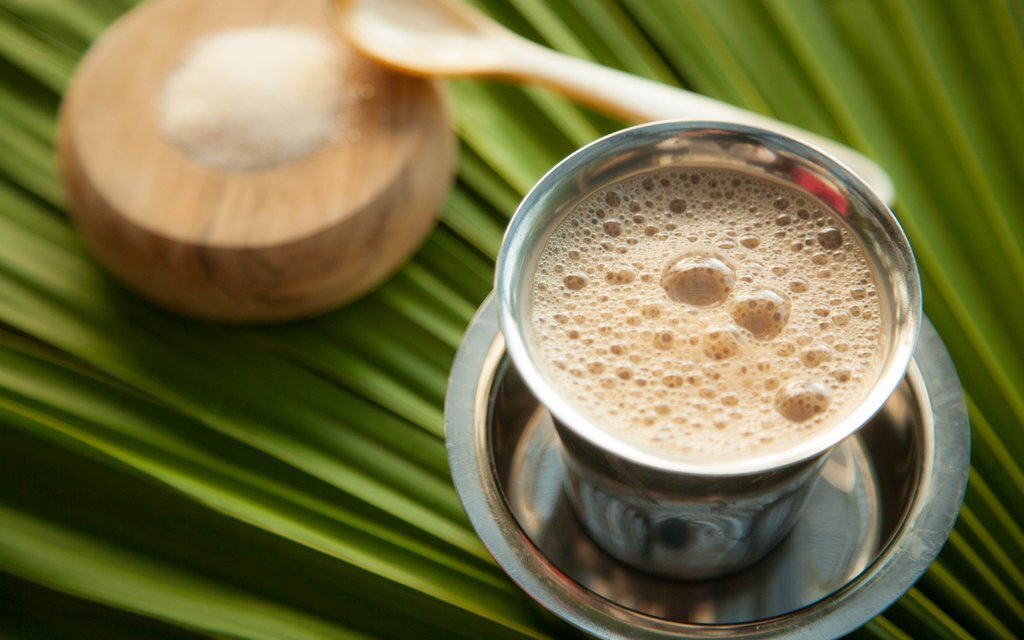Does Aerating Coffee Improve the Taste? Feat. Kaffeine
Aerating Coffee
This was my question when I first saw it on UAE Brews. He had tried it out at a cafe in Sharjah - Muweilah, the heart of specialty cafes in this Emirate. Close to home and quite honestly the best place for cafe hopping, Kaffeine was the place to go to try this unusual way of using an aerator to “make filter coffee taste better.”
Kaffeine is newly opened and apart from brewing great coffee, they also have an interesting spread of desserts. You might have seen some of their confectionery i.e. Geisha Cake in cafes such as Space Cup.
I was in the mood for some V60 and head barista JJ was happy to accommodate my request. Ethiopia was my choice of beans and JJ used the single pour technique with a 20 second bloom. The floral aromas were quite prominent while brewing as the sweet smell made its way through my face mask. This made me question the integrity of the COVID protector I was wearing at the time but I was quickly distracted as JJ ran me through his brewing process.
I wanted JJ to pour half of the finished brew through the aerator, and leave the other half as is in the carafe. It was only fair to try them side by side and I had only wished I could taste it blind to remove any external biases. I’m not sure that’s entirely possible as the surface of the aerated drink was super bubbly. My thoughts below.
The aerated brew had more body and definitely felt smoother with noticeable floral and berry notes. I could also taste some tamarind with little to no acidity. The non-aerated drink tasted like it had more acidity but with the same berry notes. Overall, the notes were mellow, probably because the temperature of the drink was on the higher side.
To think about it, I haven’t seen an aerator used for coffee anywhere in the UAE, and asking a few experienced baristas I couldn’t get an answer if it really makes a difference. So what’s exactly happening here? This particular aerator is actually used for wine. According to Kaffeine, aeration is a process of adding air to the coffee giving more body and drowning out the bitterness.
Doing some research online, Redditor u/Anomander explains it this way: brewed coffee oxidizes similarly to dry beans - just faster. Many plants, even coffee contain contain something called chlorogenic acids (CQAs). CQAs break down with oxygen splitting into caffeic and quinic acid components, which can affect the taste of coffee and are associated with bitter/sour/astringent notes. Link to the thread here.
When it comes to whole beans or pre-ground, exposing to air isn’t considered desirable and will make your coffee stale. The coffee will lose it’s freshness and aroma if not kept in an air-tight or vacuum-sealed container.
What about pouring from a height? Seems like a similar phenomenon, it will cool it down to a more drinkable temperature and also distribute the extraction evenly. Swirling the carafe also does the same, filter coffees shine when the drink starts cooling down.
Photo by Ministry of Kaapi
Going on a tangent - South Indians have a different version of filter coffee. This sugar-laden, strong, milky coffee decoction is made with a stainless steel filter. The drink is made creamier and frothier by repeatedly pouring back and forth between different different cups to mix the sugar and hot milk, aerating the decoction.
Coming back to Kaffeine, they get full marks from me when it comes to presentation and educating the customer about specialty coffee and respective brewing methods. The consumer goes home with a different experience and also the knowledge to share that is much needed to educate about specialty coffee.
What are your thoughts on this? Have you been to Kaffeine (location) or tried something similar? Let me know in the comments below.


